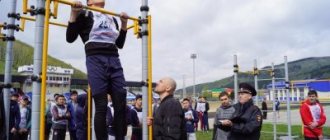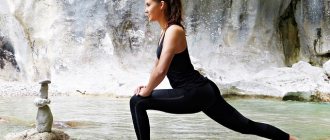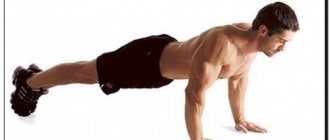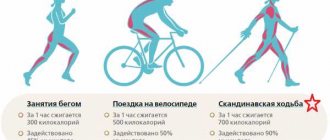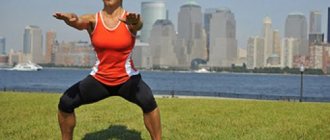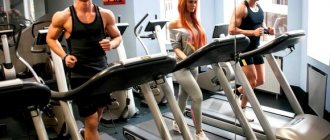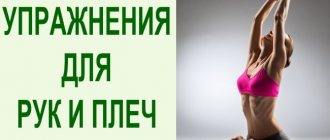The French philosopher Voltaire gave humanity a wise saying back in the 18th century: “Movement is life.” It is difficult to disagree with a great thinker when your back hurts or your legs ache, and life turns into a nightmare. Thus, without any doubt, we can consider therapeutic physical culture a clear embodiment of Voltaire’s intelligent thought and an effective method of returning the joy of movement to a person.
Exercise therapy as a clinical branch of medicine
Few of us know that doctors classify physical therapy as a separate clinical section, which studies the treatment and prevention of diseases using physical education methods. As an independent scientific discipline, exercise therapy, according to the state standard, has been assigned a scientific specialty code number 14.00.51. This means that physical therapy is included in the list of medical sciences, which allows us to talk about it as a scientifically based method of combating various diseases.
Specialists involved in exercise therapy are trained in medical universities at the medical and pediatric faculties. Additional areas of training in the discipline include: occupational therapy, mechanotherapy and massage. The main means of physical therapy or exercise therapy are all types of physical activity, including walking, swimming, games, bath procedures, tourism, exercises on exercise machines.
Beneficial effects of exercise therapy
By stimulating the body's natural reflexes, a set of therapeutic exercises has a special effect on it, helping:
- activate its physiological functions;
- improve the adaptation of organs and tissues to new conditions;
- speed up recovery processes;
- normalize metabolism;
- normalize water-salt metabolism;
- improve psycho-emotional mood;
- stop the development of the disease;
- increase resistance to negative external factors.
The effect of exercise therapy can be general and localized, which is supported by patients performing physical exercises that correspond to the indications.
Treatment mechanism
The therapeutic value of special physical exercises is that they have a multi-level positive effect on all human tissues, organs and systems. Doctors identify the following mechanisms of therapeutic effect from exercise therapy:
- Toning. By having a stimulating effect on the nervous system, exercise therapy improves its functioning and stimulates the functions of the endocrine system and other organs. Training has a positive effect on the emotional state of the patient, toning the entire body.
- Trophic action. Negative processes occurring in the body during illness negatively affect organs and tissues, changing their cellular structure. Disturbances occur in metabolic processes. Therapeutic exercises trigger cell regeneration and have a beneficial effect on the functions of the cardiovascular and respiratory systems, which leads to increased metabolism. There is a process of resorption of pathological formations and the growth of healthy tissues and blood vessels.
- Formation of compensation. Exercise therapy helps replace functions lost due to illness, improves the condition of tissues and organs, and allows the body to adapt to new living conditions with minimal negative consequences. Shortness of breath disappears, heart function stabilizes.
- Normalization of functions. Partially or completely lost functions are restored. There is a large-scale improvement of the body.
Conclusions on the therapeutic effects of exercise therapy are made on the basis of many years of observations and research. All systems of human life are closely interconnected, which allows physical therapy methods to carry out healing work at all levels.
Therapeutic exercise for the spine is the best remedy for back pain
High-quality prevention of back diseases will not hurt even completely healthy people.
When doing physical education, the following occurs:
- increase in general tone;
- reducing pressure on intervertebral discs;
- improved mood;
- improved posture;
- strengthening the spinal muscles and ligaments;
- improving metabolism and blood flow.
Soon you will feel lightness throughout your whole body, and your back will “come to life” again! The special technique used to develop exercise therapy for the spine will consolidate the effect for a long time, and you will certainly thank yourself by making the right decision to take care of your health.
All you need to do is consult a doctor, he will prescribe an exercise program that suits your back!
Contraindications
As with any other medical methods and means, there are contraindications for exercise therapy. Experts do not recommend physical therapy if the patient:
- the temperature has risen;
- blood pressure increased;
- risk of bleeding;
- severe pain when doing exercises;
- serious condition.
The decision to use exercise therapy or refuse it is made by the attending physician, who bases it on the individual indications and condition of the patient at the time of its adoption.
Exercises to prevent pain
As soon as the complex given above becomes easy for you, it is worth expanding the load. The increase should be step-by-step - you can simply increase the number of repetitions of the exercises. Don’t stop there, you need to continue to train your muscles so as not to fall back into the exacerbation phase in the future . Together with your doctor, you can choose a set of gymnastic exercises that train all the abdominal and back muscles. It is worth thinking the same way about such a well-known complex as yoga.
Yoga classes bring good results, since the entire system is built on stretching exercises. These types of exercises can relieve pain and give the vertebrae the necessary flexibility. It is important to remember that before you start, you should find a good trainer. If you are going through a phase of acute pain, you should not risk it at all by starting exercise on your own, without the recommendation of your doctor. Since there is a danger of damaging the spine. More details in the video below:
- We recommend reading: spinal traction for hernia and osteochondrosis
In general, all procedures related to force loads on the spine should ideally be agreed upon with a physical therapy doctor or neurologist. It would be a good idea to consult your doctor directly. Self-medication often leads to negative consequences. You can only do gymnastics on your own in the morning, choosing a set of exercises. If you are not in the acute exacerbation phase.
It’s good to start playing any sport, 2-3 times a week. This will be great as an addition to morning physical exercise. If possible, start morning jogging or Nordic walking. Start training on exercise machines if you don't have time to exercise outdoors. Watch your daily routine and your diet. Excess weight puts pressure on the spine and increases the risk of disease. Take care of your health, walk more, move and don’t overwork if possible. A healthy lifestyle plus daily physical activity will improve your quality of life in any case.
Types of funds
The main means of exercise therapy for various diseases and injuries are various exercises designed for targeted impact on problem muscle groups and joints. The physical activity received by patients during these exercises is divided into ideomotor and gymnastic. The first types of therapeutic exercises are in the area of mental processes and are used for rehabilitation of paralysis and paresis. The latter are aimed at developing endurance, strength, restoring impaired coordination and improving the mobility of joints and the limbs of the body in general.
Therapeutic gymnastics exercises can be of the following nature:
- Statistical and dynamic. With static muscle tension, the patient holds himself in a certain position for some time. In dynamic movement, when performed from various starting positions, muscles are trained for strengthening and joints for mobility.
- For stretching and relaxation, helping to relieve muscle tension and correctly distribute the load.
- Active and passive. The first type is performed by the patient himself, the second is performed by the doctor. Methods of passive physical exercises are included in the treatment complex for paralysis and paresis.
- Separately for different parts of the body. They are used for minor lesions and improve the functions of a specific area of the body.
According to the form of execution, they can be preparatory, respiratory, balance and corrective. The combined use of gymnastic and breathing exercises gives a general healing effect, relieves congestion and improves the functioning of all systems. Corrective movements work on the spine, improving posture and mobility.
Exercises to prevent back pain
This simple exercise, consisting of eleven exercises, will help relieve pain and discomfort in the back. Just do the exercises calmly, without fanaticism.
- Starting position: lie face up, put your feet up, bend your knees. The feet are completely pressed to the floor, the leg muscles are relaxed. First clasp one leg with your hands - under the knee with one hand, the other just above the knee, and then lift it. Feel the tension. Hold in this position for about 30 seconds. Lower your leg and rest for 15 seconds. Repeat with the next leg.
- Take the starting position indicated for exercise number one. Pull your stomach in while simultaneously lifting your pelvis slightly, trying to press your lower back. Pressing it as tightly as possible, hold for 15 seconds, fixing the position and return to the beginning. Repeat ten times, taking a 10-second break between repetitions.
- Bend your legs while lying on your back, as in the first two exercises. Grasp the back of your head with your hands, or cross them over your chest - it depends on your athletic training. Try to make it comfortable for you to start, and as your fitness level increases, gradually increase the load. Press your lower back to the floor, raise your head while raising your shoulders. Hold the position for 10 seconds. Then slowly lower yourself. Do it 10 times.
- The exercise is called a cat: get on all fours, back parallel to the floor, arms straight. Arch your back like a cat, freeze for a couple of seconds. Smoothly return to the original state. Do 5-10 repetitions.
- Lie on your stomach, face down, with an exercise ball or pillow under your hips. Stretch your straight right arm forward, at the same time straighten and stretch your left leg back until your back muscles are tense. Hold the position for 2 seconds and slowly lower it. Repeat, alternating arms and legs. Do a full 10 repetitions.
- The starting position is the same as the first two, arms slightly to the sides. Exhale and lift your buttocks off the floor. Let your shoulders remain motionless, make a half-bridge, then smoothly return to the starting position. Do 15 reps.
- Lie on your stomach, arms pressed to your body, along your body. Slowly bend back, moving your arms up, but without causing any pain. Slowly return to the original position. Repeat 5-7 times.
- Lying on your stomach, bend your knees, put your hands behind your back, grab your feet and stay in this position for about half a minute. Then rest for about 1 minute, calm your breathing. Repeat 3-5 times.
- Get on all fours, as in the “cat” exercise. With your knees bent, lift your top and turn your body alternately to the sides, leaning on your knees and hands. Repeat at least 15 times.
- The simplest and most effective exercise for the neck muscles is to tilt your head down and roll it clockwise, alternately pressing it against your shoulders, back, and chest. Then roll your head counterclockwise in the same way. Repeat at least 20 times in both directions. This exercise can be done even at work, during a break. Watch the video:
- We recommend reading: exercises for the back with a roller under the lower back
This is a simple way to relieve the feeling of heaviness and fatigue in the back, it can be done on the horizontal bar. Just hang with your hands. You don't have to do a pull-up, a regular hang is enough. This increases the distance between the vertebrae, relieving tension and pressure. This relieves pain and discomfort.
Complete the complex with a small relaxation exercise, stand in a free position, lower your relaxed arms along your body, do not place your feet wide, just shoulder-width apart. Lean forward smoothly, touching the floor with your fingers. Return to the starting position, breathe deeply and measuredly. Do 3-5 repetitions.
Varieties of forms
When developing a complex for the entire period of treatment for an individual patient, it includes various forms of exercise and exercise therapy. The goal pursued by specialists is to carry out comprehensive rehabilitation of the body, prevent the development of diseases and restore motor activity to the patient. The objective application of forms used to restore body functions using physical therapy methods is clearly shown in the table:
If exercise therapy means are used for children, then their forms are of a playful nature. For example, as forms of exercise therapy, volleyball or football on the sandy bank of the river. Walking on uneven surfaces helps correct flat feet in a child. Swimming lessons are useful for teenagers to help cope with poor posture and signs of scoliosis. For children with cerebral palsy, horseback riding is recommended.
Whatever form the doctor and patient choose for exercise, they must be dosed and take into account the general condition of the body. At the peak of the development of the disease, loads are dosed to a minimum and are aimed at creating compensation and preventing complications. The intensity of the loads used during the recovery period increases significantly. The process does not end after the main task is completed. Exercise therapy retains its healing function and is beneficial at any age.



